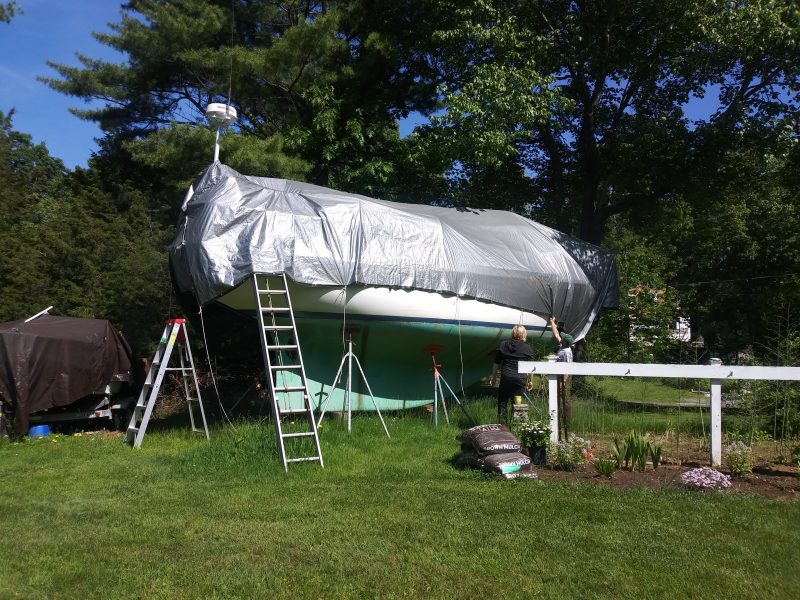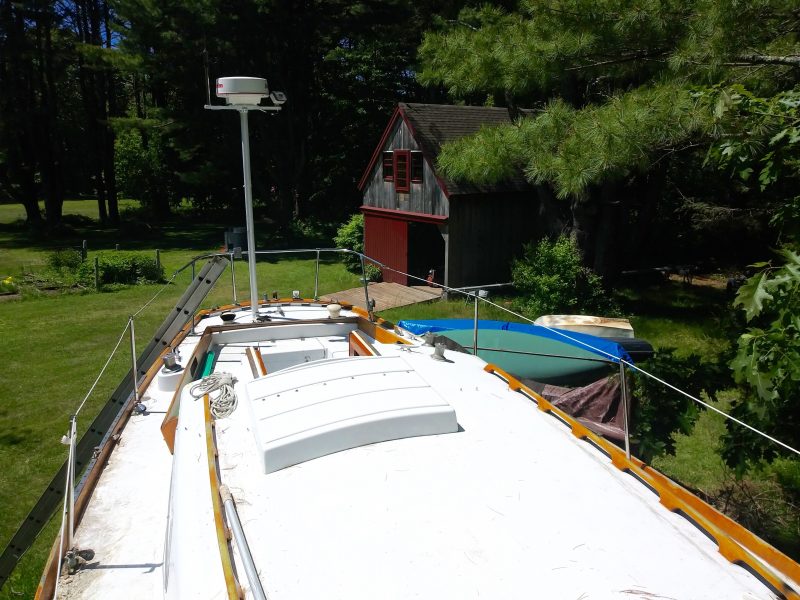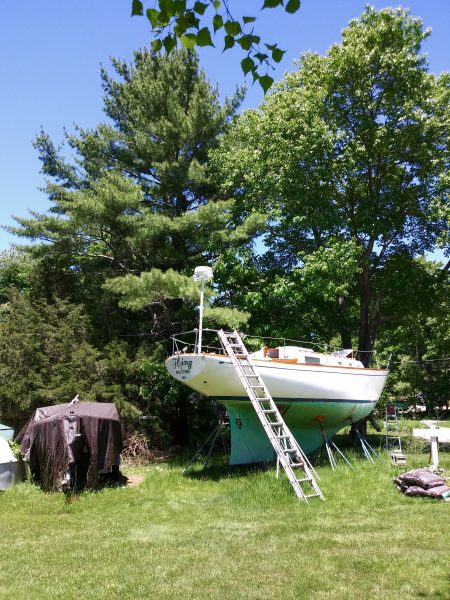
When West Meets East, Part 2
The breeze on the Seacoast was 10 to 15 knots, rustling the trees in my friend’s back yard in Rye, New Hampshire, which was just a few miles from the beach and Rye Harbor State Park. As we said in part 1 of When West Meets East, New England had had an unusually wet, cold spring, upon my arrival in early June, which delayed the launch of SPBs [Several People’s Boats] — not to mention all those delays caused by life.
One of my favorite things to do on vacation . . . is work. Seriously. There’s only so much catching up over drinks that one can do before you start to feel like a tourist with no purpose. And when you’re traveling on a budget, you’ll often find yourself couch-surfing in friends’ living rooms — or, if you’re lucky, on their boat. What better way to thank people than to help bang out a few boat projects? (My friends had often rallied to do the same for me.)

I’ve stayed with my friends in Rye nearly once a year since I left New England in 2005; one year, I helped put new bottom paint on their 1922 21-ft Alden Indian Sacagawea. Last year, my friends bought the Douglas 31 Fling, which they kept in their back yard for the winter. I should stop here to acknowledge two concepts foreign to an urban West Coaster: First, that people could own a back yard big enough to store a boat (several yards around Rye — all of which were epically, lusciously green and lush from the wet spring — sported boats being prepped for the water). And second, that boats need to be put away for winter.
In comparing the “boaty-ness” of the West Coast vs. East, there are myriad factors that define what makes a place good for sailors — namely the place itself and what it offers in terms of sites, conditions, docks and facilities, etc. But under that “conditions” category, the East Coast has that whole nine months of deep-freeze thing. In response to Wednesday’s part 1, Milly Biller wrote: “I love the East Coast in the summer, but their winter sucks! I like sailing year round.” We couldn’t agree with you more, Milly. That the East Coast has such a short window into its boaty charm may, in some strange way, inflate its appeal. (We’ll have more of that in the next and final installment of this series.)

My friend had built a PVC frame spanning the entire deck of Fling last fall to support the tarp (I regret that I didn’t snap a picture of it before we took it apart). After the first heavy downpours of the fall and winter, my friend reinforced parts of the frame with two-by-fours. The tarp — and boat — weathered the winter well; Fling was bone-dry inside when we unearthed her.

All that remained was to truck the boat to the harbor, step the mast, and sail her to her mooring in Kittery, Maine, on the Piscataqua River. While their season was short last year (it seems like all East Coast seasons are, by definition, short) my friends said they had a few excellent sails, including Gloucester (where they bought the boat) to Kittery and out to the Isle of Shoals, off the New Hampshire coast.
My friends had “plans” to buddy-boat Down East, or north, up the coast of Maine. But like any good cruising program, those plans were, at best, loosely defined. “We’re just going to show up in Bar Harbor and take it from there.”
